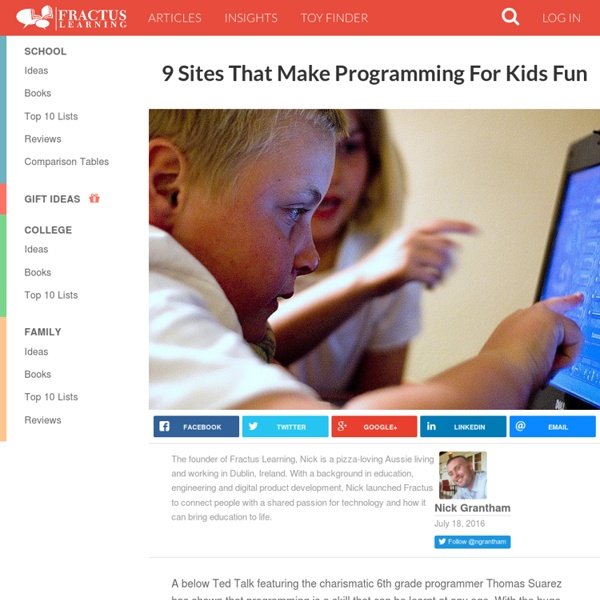



Top 10 Sites for Educational Games There's no denying the appeal that online games have for kids. Despite the stigma games hold, many online educational games not only enhance the joy of learning, but also strengthen skill sets. The following are my favorite educational gaming sites on the web. Funbrain- One of the most popular educational gaming sites around. David Kapuler is an educational consultant with more than 10 years of experience working in the K-12 environment. The 2015 Honor Roll: EdTech’s Must-Read K–12 IT Blogs The world of educational technology can be intimidating. Bloggers help make sense of this ever-changing industry with wit, insight and tactical advice. EdTech is proud to recognize this latest crop of the top K–12 IT bloggers. This year's 50 entries are a mix of veterans from years past, fresh picks by our editorial staff and nominations from readers. One of our goals for this year's list was to highlight blogs from a wide range of educators and experts. If you'd like to check out the Must-Read IT Blogs from previous years, view our lists from 2014, 2013 and 2012. Did your blog make our list? This year, educational technology guru and speaker Michael Gorman led a prolific eight-part series covering more than 70 STEM classroom resources. Follow: @mjgormans | Read the blog: Thousands of educators look to Eric Sheninger and his blog for leadership in technology. Follow: @e_sheninger | Read the blog:
8 Technologies That Will Shape Future Classrooms What does the future of learning hold? What will classrooms of the future be like? Emerging technologies such as cloud computing, augmented reality (AR) and 3D printing are paving the way for the future of education in ways we may have yet to see. At the very least though, we can extrapolate from what these promising technologies and predict how schools will adopt them in time to come. However, just as the original intentions for new technology often give way to innovative and unpredictable usage, we can never be sure if a twist is waiting for these rising stars. As for now, let us observe their progress and speculate on how these 8 up-and-coming technologies could potentially change education for the better. Recommended Reading: Major Tech In Education Trends In 2013 [Infographic] 1. We’re still waiting for Augmented Reality to take the world by storm by way of Google Glass, gaming and awesome apps for astronomy. Read Also: 5 Top Augmented Reality Apps For Education A New Way To Teach 3.